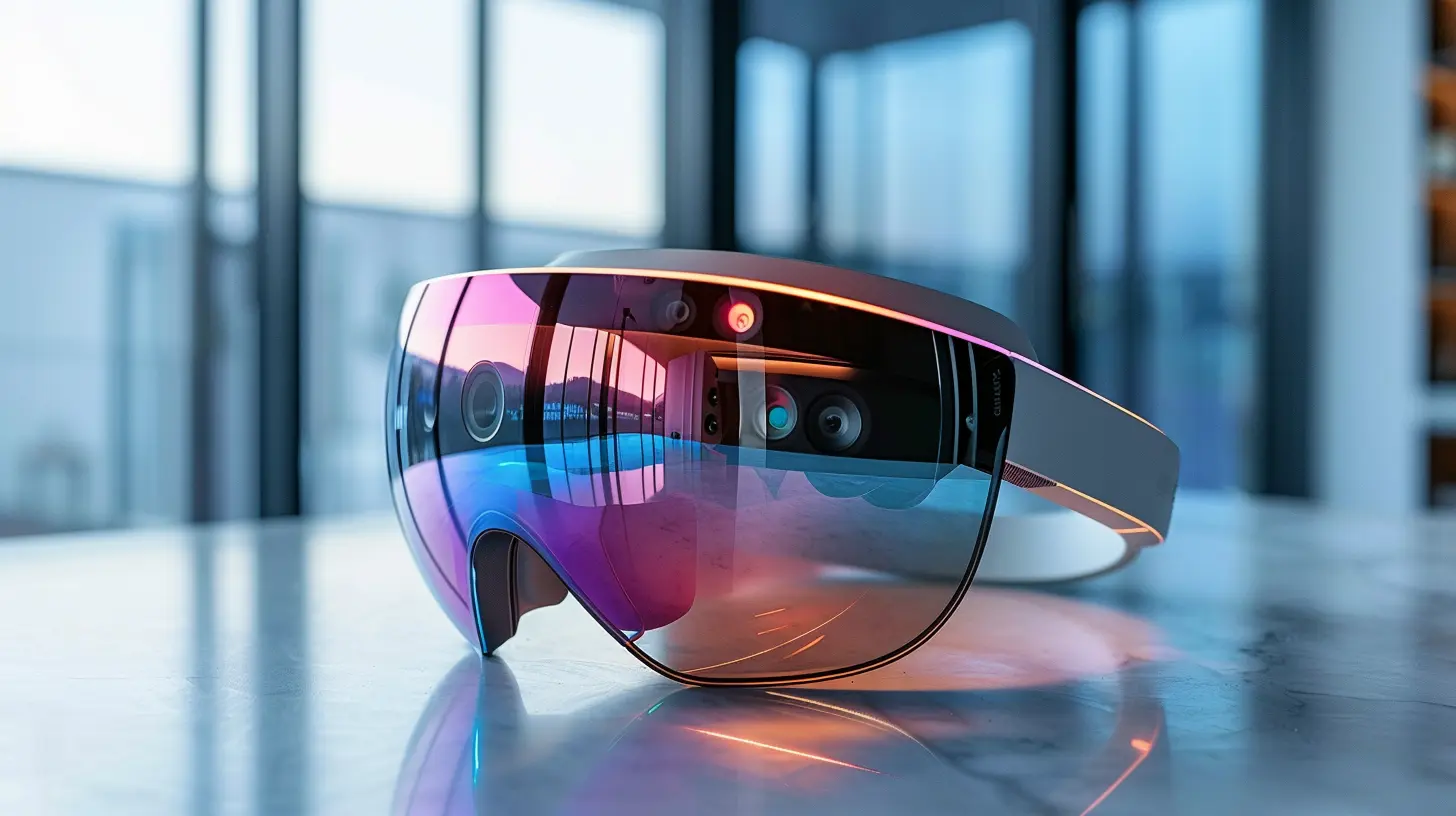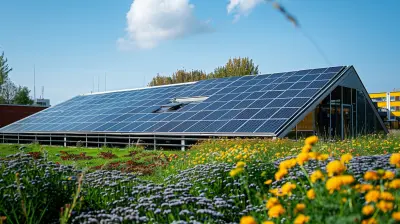The Growing Importance of Low-Latency Networks for AR/VR
29 October 2025
Augmented Reality (AR) and Virtual Reality (VR) are no longer just buzzwords floating around the tech world. These technologies are quickly becoming integral parts of various industries, from gaming and entertainment to healthcare and education. While the headsets, controllers, and software experiences grab most of the headlines, there’s an unsung hero working tirelessly behind the scenes: network performance. Specifically, low-latency networks are becoming increasingly vital for AR and VR to reach their full potential.
So, why does latency matter so much for AR and VR? In this article, we’ll dive deep into the growing importance of low-latency networks for AR/VR, and why they’re the backbone of these immersive technologies.

What is Latency, and Why is it a Big Deal?
Let’s start with the basics. Latency refers to the time it takes for data to travel from one point to another. In simpler terms, it’s the delay between the action you take and the response you get. For instance, when you click a link on a website, there’s a tiny delay before the page loads. That’s latency.In many everyday applications (like browsing the web or streaming a Netflix show), a little bit of latency isn’t a big deal. You probably wouldn’t even notice it most of the time. However, in AR and VR, latency becomes a huge issue. Why? Because these technologies rely on real-time interaction. Even a small delay can break the immersion, make the experience feel clunky, or in the worst-case scenario, cause motion sickness.
Imagine you're in a VR game, moving your head to explore a virtual world. If there’s a noticeable delay between your movement and the image adjusting, it can make the whole experience feel unnatural. That’s where low-latency networks come in—they minimize that delay, making sure the virtual world responds to your actions in real time.

AR/VR: A Real-Time Experience
One of the most significant selling points of both AR and VR is their ability to create immersive, real-time experiences. Unlike traditional media, where you’re passively watching or interacting in a set way, AR and VR put you at the center of the action. You’re not just observing; you’re participating.- In VR, you’re placed in a completely virtual environment. Every movement you make, whether it’s turning your head, walking, or picking up a virtual object, needs to be mirrored instantly in the virtual world.
- In AR, digital elements are layered over the real world. If you move your phone or AR headset, those digital elements need to adjust in real-time to stay anchored in the right place.
To make these experiences smooth and realistic, the network needs to handle massive amounts of data with almost zero delay. This is where the importance of low-latency networks shines.

How Latency Affects AR/VR Performance
When latency is too high in AR/VR, several issues pop up, and none of them are good.1. Motion Sickness and Discomfort
Low-latency networks are crucial for preventing motion sickness, which is a surprisingly common problem in VR. When there’s too much delay between your physical movement and what you see in the virtual world, your brain gets confused, and that can lead to nausea and dizziness. Basically, your body knows something’s off, and it doesn’t like it.2. Reduced Immersion
The whole point of AR and VR is to create immersive experiences, right? If there’s a noticeable delay between your actions and what you see, it breaks the illusion. You’re no longer “in” that world; you’re just playing with a glitchy screen. Immersion is key to making these technologies effective, whether you’re gaming, training for a job, or receiving medical treatment.3. Compromised Real-Time Collaboration
In AR/VR applications where multiple users are involved (e.g., virtual meetings or collaborative work environments), high latency can make interactions feel awkward and unnatural. If you’re trying to have a conversation or work on a project together in a virtual space, delays can make it difficult to communicate effectively.4. Lag in Interactive Content
In AR and VR, users often interact with digital objects, whether they’re manipulating tools in a virtual workspace or playing a game. High latency can cause delays in how these objects respond, making the experience frustrating. Think of it like trying to play a video game with a laggy controller—annoying, right?
The Role of 5G in Low-Latency Networks
Now, let’s talk about the cavalry that’s coming to save the day: 5G. If you’ve been following tech news, you’ve probably heard a lot about 5G, the next generation of mobile networks. One of the key promises of 5G is ultra-low latency, which is exactly what AR and VR need to thrive.How 5G Makes a Difference for AR/VR
5G networks are designed to dramatically reduce latency compared to current 4G networks. While 4G networks typically have latencies in the range of 30-50 milliseconds, 5G aims to bring that down to as low as 1 millisecond. For AR and VR, this is a game-changer.- Faster Data Transmission: With 5G, data can be transmitted almost instantly, allowing for real-time updates in virtual environments. This means no more frustrating delays when you’re interacting with virtual objects or other users.
- Improved Cloud Processing: Another big benefit of 5G is that it allows more data processing to be done in the cloud rather than on the device itself. This is especially important for AR/VR, where processing power can be a bottleneck. With 5G, complex tasks like rendering 3D environments can be handled in the cloud and then streamed to your device with minimal delay.
- Seamless Multiplayer Experiences: In multiplayer VR games or collaborative AR workspaces, low-latency 5G networks ensure that everyone’s actions are synced up in real-time, making the experience feel more natural and immersive.
Edge Computing: The Perfect Partner for Low Latency
While 5G gets a lot of attention for its role in reducing latency, there’s another technology that plays a crucial role: edge computing. In simple terms, edge computing involves processing data closer to the source (i.e., your device) rather than in a distant data center.Why does this matter for AR and VR? Because the closer the data processing happens to you, the less time it takes for that data to travel back and forth. This means less latency.
For example, in a virtual reality environment, edge computing can handle things like motion tracking or object rendering right near the user, cutting down on the time it takes for the data to be processed. When combined with 5G, edge computing can help create the ultra-low-latency networks AR and VR need.
Industries That Will Benefit from Low-Latency Networks in AR/VR
The benefits of low-latency networks for AR and VR go beyond just gaming and entertainment. Let’s take a look at some industries that stand to gain from these advancements:1. Healthcare
In healthcare, AR and VR are already being used for things like surgical training, therapy, and even remote surgeries. In these applications, low latency is critical. Imagine a surgeon performing a remote operation using VR—any delay in the network could have life-threatening consequences.2. Education
AR and VR have enormous potential in education, from virtual field trips to interactive science lessons. However, for these experiences to be effective, they need to be smooth and responsive. Low-latency networks ensure that students can engage with AR/VR content in real-time, making the learning experience more interactive and immersive.3. Manufacturing and Industry
In manufacturing, AR is being used for things like real-time equipment monitoring and remote maintenance. If there’s a delay in the data being transmitted, it could lead to mistakes or even accidents. Low-latency networks ensure that workers have accurate, up-to-date information at all times.4. Retail and E-commerce
AR is starting to play a role in online shopping, allowing customers to “try on” clothes or see how furniture would look in their homes. For these applications to be successful, they need to work in real-time. If there’s too much lag, customers are likely to get frustrated and abandon the experience.5. Telecommunications
Telecommunications companies are starting to use VR for things like virtual meetings and customer support. For these interactions to feel natural, low-latency networks are essential. No one wants to deal with awkward delays during an important meeting or while troubleshooting a problem.The Future of AR/VR with Low-Latency Networks
So, what does the future hold for AR and VR as low-latency networks become more widespread? The possibilities are pretty exciting.- Hyper-Realistic Virtual Worlds: As networks get faster and latency becomes almost non-existent, we can expect virtual environments to become even more realistic and immersive. Imagine exploring a virtual world that feels indistinguishable from the real thing, with no lag or stuttering to break the illusion.
- Mass Adoption of AR/VR: Currently, one of the barriers to mass adoption of AR and VR is the hardware limitations. But as low-latency networks like 5G and edge computing become more common, these technologies will become more accessible to the average consumer, leading to wider adoption across various sectors.
- New Applications and Industries: With ultra-low-latency networks, new use cases for AR and VR will emerge that we can’t even imagine yet. From virtual tourism to fully immersive sports experiences, the possibilities are endless.
Final Thoughts
The growing importance of low-latency networks for AR and VR can't be overstated. These technologies thrive on real-time interaction, and any delay can disrupt the experience. With advancements in 5G and edge computing, we’re on the verge of a new era where AR and VR experiences are smoother, more immersive, and more accessible than ever before.As low-latency networks become the norm, expect AR and VR to move from niche technologies to mainstream tools that revolutionize industries and change the way we experience the digital world.
all images in this post were generated using AI tools
Category:
NetworkingAuthor:

Gabriel Sullivan
Discussion
rate this article
1 comments
Savannah McVicar
Absolutely! Low-latency networks are the backbone of immersive AR/VR experiences. Can't wait to see how this evolves!
November 2, 2025 at 3:21 AM

Gabriel Sullivan
Thank you! It's exciting to see how low-latency networks will enhance AR/VR experiences in the future!


